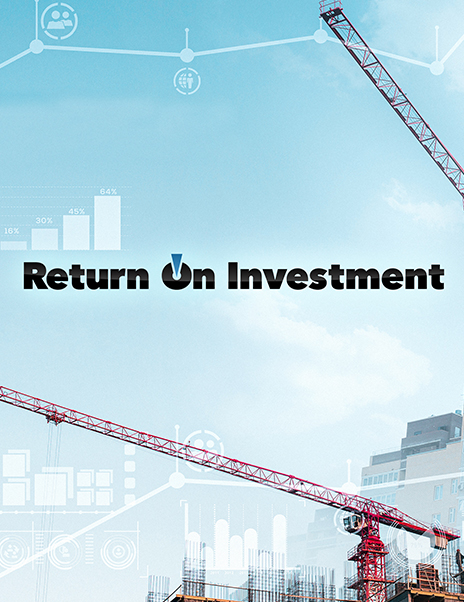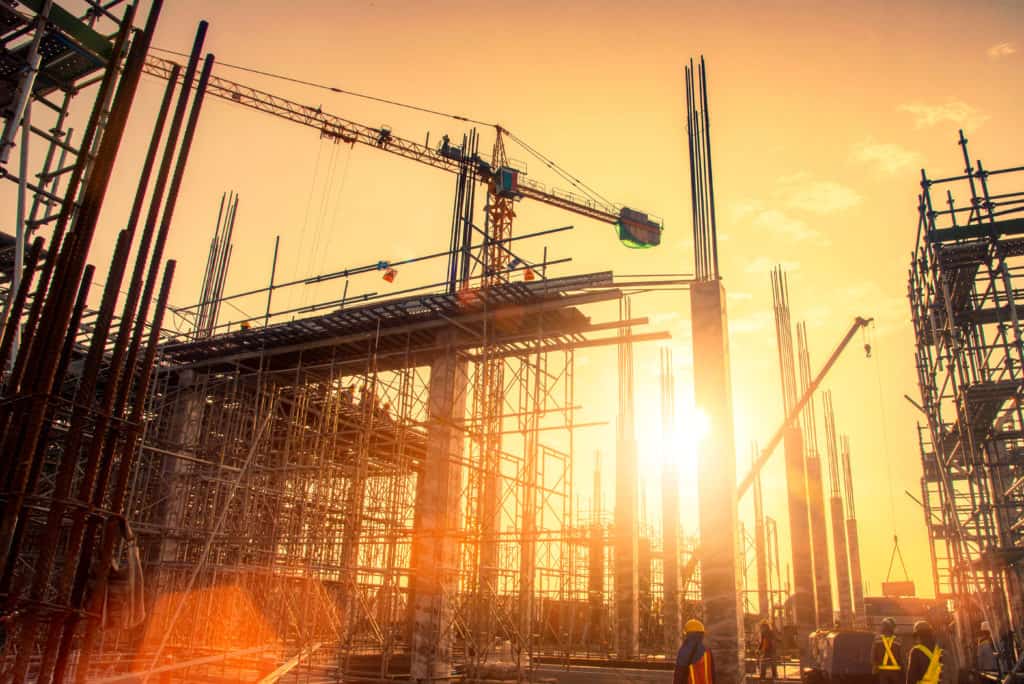Due to the numerous variables involved with commercial buildings, price figures and construction costs for the average code per square foot differ greatly from state to state across the United States. Considering the elements of design, architecture, construction, furniture, fixtures, IT implementation, and more, the average cost to build out an office is $196.49 per square foot.
Nevertheless, these figures vary across the U.S. where construction labor is tight and office development is in high demand. That’s why comparing construction costs regionally is so important to your real estate strategy, especially if you have offices in more than one location, or are evaluating where to expand.
As a large pipeline of new construction is delivered, office landlords across major U.S. cities will compete for tenants by offering more attractive tenant improvement (TI) packages. These offerings enable tenants to customize their interiors without having to pay for a full redesign out-of-pocket and are a key piece of lease negotiations. In fact, studies show that the average TI allowance nationwide is $30.00 per square foot – and the average is up to just over $50.00 per square foot in central business districts (CBD).
However, this trend extends far beyond the office market – industrial occupiers require more e-commerce space, with higher shelving, new technology, and office space, among other customizations. Retailers, who often self-fund TI projects, are using brick-and-mortar stores as an extension of their online presence while incorporating more technology into their stores to support an omni-channel sales strategy.
Restaurant chains are also following suit in a similar fashion, as quick-service restaurants redesign their interiors to better compete with fast-casual concepts. In this article, we’ll explore the variables in construction costs for commercial buildings across the United States.
Table of Contents
Commercial Construction Costs Across The U.S. Market
According to research conducted by Jones Lang LaSalle (JLL), an American professional services and investment management company specializing in commercial real estate, construction costs continue to grow nationwide. Consequently, many landlords are looking to redevelop existing stock in major markets. Furthermore, the focus on tenant improvements (TIs) is also gaining momentum as a result of the urban renewal trend, which, according to JLL, is driven by millennial demand for the city center, as well as unique and open spaces. Tenant improvement allowances can cut office fit-out costs by up to $85 per square foot. However, looking at construction costs alone will not provide you with the most accurate information – for the true cost of a build-out, you need to also consider the tenant improvement (TI) allowances.
Most landlords provide TI packages to put towards the cost of building out your space, especially now that more tenants want an office that’s tailored to their specifications. They’ll usually offer a small portion of construction costs, but in some cities, tenants receive enough to offset their bill considerably. San Francisco, for example, has the second-highest fit-out costs at $237.13 per square foot, but with tenant-friendly TI allowances averaging $45, it drops to the fourth most expensive spot to build.
When you start crunching the numbers of tenant improvement allowances, geography can greatly affect your bottom line. For example, looking at 2,469 of JLL’s own project budgets spanning 51 local markets and 17 industries, they have found the 10 most and least expensive cities to build an office when factoring in TI allowances, as outlined below:
- New York City: New York construction costs are around $244 per square foot, making it the most expensive city to build in. But landlords are vying for tenants with sizable TI allowances (around $65), dropping this market down to 5th place for highest out-of-pocket spending.
- Washington DC: The District of Columbia comes in as the least expensive market for overall fit-outs in 2017. Slightly below average build-out costs are offset substantially by large concession packages that are leading the national average.
- Detroit: In a perfect storm of above-average fit-out costs and minimal TI packages, Detroit swings in as one with the highest out-of-pocket expense, beating out Chicago costs by $0.43 per square foot.
- Los Angeles: In a surprise to many, Los Angeles is the 6th least expensive city to build a new office. Enormous TI packages top $85 in the metropolis (tied with DC for the largest in the nation), proving there’s an affordable option in notoriously expensive California.
- Southern Market: In a strong showing of force, six of the ten most affordable markets in the U.S. exist in the South – further proof that affordable labor and materials in the region can greatly affect your office fit-out bottom line. Houston sits at second place, while the flourishing city of Atlanta steps in as the 5th most affordable market, pairing southern affordability with TI allowances nearly 25% higher than the national average, at $52.50 per square foot.
Based on these statistics, being an educated tenant in 2018 has become more important than ever. The construction and development industry saw a record year in 2016, with 2.7% growth in construction costs across the United States. 2018 is expected to follow suit, and conditions will only become more favorable for landlords.
As workplace trends continue to shift and the economic landscape continues to evolve, it will be more important for companies to select a location and build a space to suit employees and tenants. Understanding your true fit-out costs by applying tenant improvement allowances to construction costs can help guide you in the right direction.

Construction Costs In Major Markets Nationwide
Statistics show that New York, San Francisco, and Chicago have a wide cost variance in their submarkets, giving them wider cost ranges overall. Despite the general decline in square footage under construction, New York saw commercial construction activity increase by nearly 2 million square feet in 2015. As a result, tenant improvements became more vital as occupiers customized newly-acquired space and attracted millennial workers.
In fact, research indicates that the percentage of millennials in the workforce will increase by almost 20% between 2014 and 2020, and companies must work harder to attract and retain top talent. Below, are additional statistics outlining the market trends:
- Millennials seek unique office space design, supporting collaborative work that promotes creative thinking. According to a Deloitte survey, 78% of millennials are strongly influenced by how innovative a company is when making a career decision.
- Tenant improvements can support this innovation in the office market, as companies fill vacant space. This customization includes new public areas, more access to technology in meeting and collaboration rooms, and open, mobile workspaces. Firms without these new finishes may find it more difficult to attract and retain young talent.
- Companies spend millions on these renovations – this is especially true for high-technology firms. The highest-cost buildout for San Francisco-based technology firms in 2014 was $12 million.
Cost Trends: Labor & Materials
Studies have shown that TI packages are growing nationwide as landlords compete to attract clients as more stocks come to the market. According to JLL research, the markets with the highest average TI package also have high levels of construction activity. For example, Washington DC saw the most construction starts in the second quarter of 2015, with three starts at 439,394 square feet.
The most expensive markets for office construction across the nation include New York, San Francisco, Boston, Chicago, Honolulu, Philadelphia, Minneapolis, Los Angeles, San Diego, Cleveland, Portland, and Washington. Despite high costs, the increase in TI packages gives occupiers the opportunity for more customized build-outs.
However, construction costs continue to increase, despite the slight dip in materials cost year-over-year. In fact, the value of construction put in place continues to grow across all major sectors, as project expenditures also increase. It should also be noted that material prices are rising (and show continued growth through 2020), though rates of increase are declining. Growth in materials prices is driven by a variety of lumber materials, such as gypsum board, lumber, and other softwood.
Though cement price growth remains low, it still saw an overall boost, while copper and aluminum continue to see price declines. Steel has experienced very low-level increases, as the market struggles with over-saturation of supply.
As employment in the construction sector continues to grow, wages should stop rising and stay steady in the future, according to statistical research. Costs remain lower in Southern states (such as Dallas, New Orleans, Atlanta, Baltimore, and Denver), while states with a large union presence remain pricier (such as Cleveland, Philadelphia, Boston, Chicago and New York).
Industrial, Office & Retail Construction Trends
Research has indicated that although office construction is rebounding from 2012 lows, activity is still below historical norms. Despite a slowdown in the winter months, construction in office and industrial construction has been up year over year since 2014. There has also been a spike in retail growth since 2015. In addition, office vacancies are slowly declining, as companies begin to renovate and occupy older stock buildings.
The most available office space is currently in the Midwest and South, as vacancy tightens nationwide. New York, San Francisco, and Chicago have a wide cost variance in their submarkets, giving them wider cost ranges overall. As a result, tenant improvements become more vital as occupiers customize newly-acquired space and attract millennial workers. Industrial construction cost ranges are the largest in California, with very little cost differential on the East Coast. Industrial square feet under construction continue to grow, especially in the South and West. Overall, retail construction costs have the largest price range, due to size and stock quality variances. The majority of new retail space is focused in the Northeast and Florida, with some Midwestern growth.
Factors that affect construction costs
Location of the construction
Logistics, especially the transport of materials to the location spike the construction costs if the location is far. The nearer the location is with ease of access for most resources, the cheaper it becomes.
Inflation rates
Since a construction project could go on for an extended period of time, the infarction factor on materials and other resources used should be noted. The current price of items may vary within months or change in weeks.
Regulatory requirements
No matter the state, construction has different regulations which are charged. Certain certifications are required which leads to a variation in cost.
Cost of Materials
The cost of raw materials can change. Taxes involved when purchasing the materials spike, ultimately leading to changing construction costs. Equipment use and hiring costs also affect the overall cost.
Size of project
A big construction has more demands for construction resources which increases costs. It may need more surveys, materials, and labor, among others.
Risk of project
Before proceeding with a construction project, risks are checked. The riskier the project, the more expensive the mitigations to be put in place are. Accounting for all risks shows costs often bypassed in the commercial construction process.
| Capital Construction Costs | Operational Construction Costs |
| Land or property acquisition | Wages |
| Statutory fees | Utilities |
| Commissions | Maintenance |
| Material, equipment | Sales |
| Labor | |
| Fittings and fixtures | |
| Insurance | |
| Taxation |
How to estimate costs
Unit Cost Estimating
This happens when a project is able to be broken into smaller units. The subdivision helps to estimate the cost of constructing one unit, then it is spread out to other projects.
Production Function estimating
A pre-defined formula is created using construction estimating software that keys in labor cost, material costs, and others then show the full cost of the construction project. This formula is adjustable.
Stick Estimating
Listing all foreseeable expenses of the construction project is done. Counting every piece of the materials is done as an estimation while determining every hour of labor.
Empirical Cost Interference Estimating
Here, cost estimation is done using regression analysis to determine the relationship between costs and specific variables like design features.
Key Construction Markets: An Overview
- Houston continues to lead the pack, with 11.1 million square feet under construction in 2015.
- Boston and Long Island see retail growth. The Northeast and Florida have shown the most retail construction growth by square foot, as the economic engine boosts demand in these regions.
- The Midwest and the Southwest lead in available office space: as companies scoop up vacant space in primary markets, secondary markets still have higher vacancy rates, which provide opportunities for firms looking for new space.
- New York City remains the most expensive market, driven by high labor burden and land supply constraints, while demand for NYC office space continues to grow.
- Chicago has had the biggest cost growth year over year since 2014, as available land declines while demand in the city increases.
Looking Ahead: What’s Next For Construction
- Construction costs continue to grow, despite a brief slowdown in materials cost. However, materials costs are projected to rebound, further driving up costs.
- Construction deliveries saw a dip in 2015, due to winter weather and other supply factors, but stats are at their highest point since the recession.
- Labor costs see no reprieve from growth, and the cost differential between markets remains high, with Southern states boasting consistently low labor costs.
- Tenant improvement demand will stay high, as companies continue to scoop up vacant property in growing primary and secondary markets and build out offices to fit shifting trends.
- As construction activity grows, TI allowances increase as landlords battle to attract occupiers; now is a good time for occupiers to lease new space. Activity is still far below pre-recession highs, indicating growth will continue over the next several years, and dollar value of TI allowances will as well.
Wrapping Up
As reviewed, not all types of construction cost the same per square foot, and even more importantly, the cost of construction per square foot varies significantly with location. Therefore, it’s increasingly important to understand the cost drivers for any commercial project and how building type, construction type, and location can all be huge variables that will drive your cost per square foot.These are always a part of the initial programming discussions, and the architect will play a huge role in helping to define the ranges of cost to expect for the project.
The construction cost estimator (either an individual or team of experts) hired will help determine the expenditures of your commercial building at the onset of your project. Using the assistance of professional tools such as our RSMeans Construction Cost Database are highly beneficial when undertaking any commercial construction project, as they can significantly impact your bottom line.
In addition to tracking labor and material cost changes, it enables you to increase efficiency while providing instant access to hundreds of thousands of material, labor, and equipment costs. Ultimately, it can help to save both you and your customers valuable time and money across the board while ensuring you’ll always have the most current and reliable information at hand.

